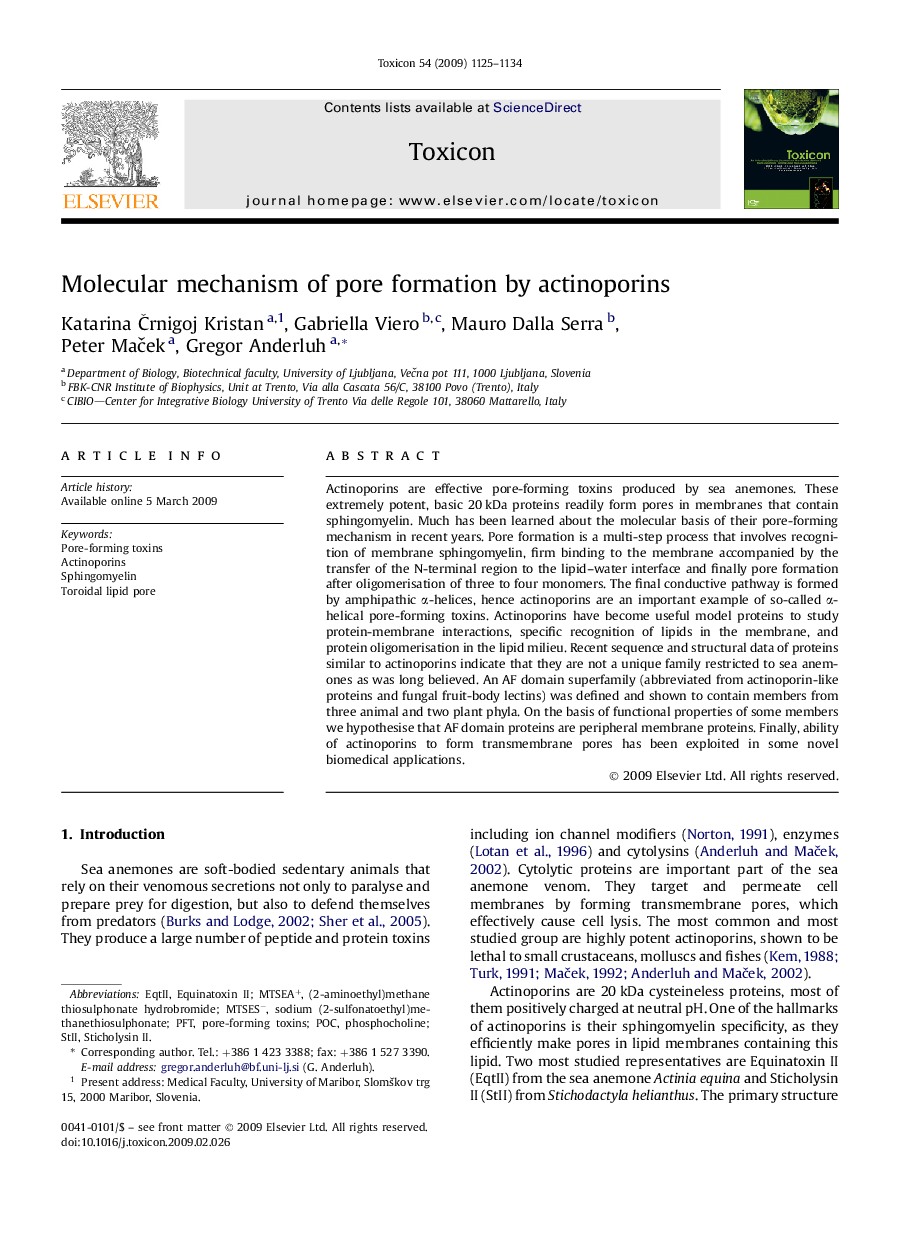| کد مقاله | کد نشریه | سال انتشار | مقاله انگلیسی | نسخه تمام متن |
|---|---|---|---|---|
| 2065111 | 1076905 | 2009 | 10 صفحه PDF | دانلود رایگان |

Actinoporins are effective pore-forming toxins produced by sea anemones. These extremely potent, basic 20 kDa proteins readily form pores in membranes that contain sphingomyelin. Much has been learned about the molecular basis of their pore-forming mechanism in recent years. Pore formation is a multi-step process that involves recognition of membrane sphingomyelin, firm binding to the membrane accompanied by the transfer of the N-terminal region to the lipid–water interface and finally pore formation after oligomerisation of three to four monomers. The final conductive pathway is formed by amphipathic α-helices, hence actinoporins are an important example of so-called α-helical pore-forming toxins. Actinoporins have become useful model proteins to study protein-membrane interactions, specific recognition of lipids in the membrane, and protein oligomerisation in the lipid milieu. Recent sequence and structural data of proteins similar to actinoporins indicate that they are not a unique family restricted to sea anemones as was long believed. An AF domain superfamily (abbreviated from actinoporin-like proteins and fungal fruit-body lectins) was defined and shown to contain members from three animal and two plant phyla. On the basis of functional properties of some members we hypothesise that AF domain proteins are peripheral membrane proteins. Finally, ability of actinoporins to form transmembrane pores has been exploited in some novel biomedical applications.
Journal: Toxicon - Volume 54, Issue 8, 15 December 2009, Pages 1125–1134